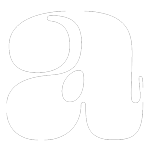The success of a website depends on many factors, but one crucial aspect is often overlooked: how the content is organized. A well-structured website can significantly improve the user experience. When visitors can easily find what they need, they are likelier to stay engaged, take desired actions (like purchasing), and return to your site. In this article, we will explore the principles and strategies for creating a content structure that prioritizes the needs and preferences of your visitors.
Why Content Structure Is Important
Content structure refers to how information is organized and presented on a website. It includes everything from the layout and navigation to how content is arranged. There are several reasons why a visitor-friendly content structure can be beneficial.
Better User Experience
An intuitive content structure makes it easier for visitors to navigate your website, find the information they seek, and complete desired actions. When users have a positive experience, they are more likely to stay engaged and take actions you want them to take.
Improved Search Engine Visibility
Search engines like Google favor well-structured websites. When your content is organized and accessible, it becomes easier for search engines to understand and rank your pages, increasing your chances of appearing in relevant search results.
Lower Bounce Rates
A confusing or disorganized website structure can lead to high bounce rates, meaning visitors leave your site after looking at just one page. With a well-structured site, you can keep visitors engaged and reduce bounce rates.
Key Principles for Visitor-Friendly Content Structure
Now that we understand why content structure is critical let’s take a look at the key principles to create a structure that puts your visitors first.
Make It Accessible
Prioritizing accessibility in your website’s content structure is essential to ensure that all users, regardless of their abilities or disabilities, can navigate and interact with your site.
For visually impaired users, make sure that all images have descriptive text that can be read aloud by screen readers. This way, users who rely on screen readers can fully understand the visual content on your site.
Use clear and logical headings and lists to establish a hierarchical order for your page’s sections and subsections. This allows screen readers to provide users with a clear overview of the content’s organization.
Additionally, ensure that your website is fully operable without a mouse and that users can easily navigate your content using only a keyboard.
Establish a Logical Structure
Establishing a logical structure in your website’s content is essential for helping users understand the organization of your site and navigate it effectively.
Start by categorizing your content into primary topics or sections. These categories should be prominently displayed in your top-level navigation menu. Subcategories can be included in dropdown menus under the main categories.
Use headings to indicate the importance and organization of content. The main page title should be the largest heading, followed by subsections and sub-subsections with progressively smaller headings.
Organize related content in a logical grouping. For example, group articles on similar topics or categories together. Ensure that the layout and styling of these grouped elements are consistent, making it clear to users that they are related.
Bonus Tip! Search Feature
When all else fails, people usually turn to a website’s search feature to find what they need. A robust search bar allows users to find specific content quickly, bypassing the need to navigate menus and links.
If you choose to have a search feature on your website, make sure it offers suggestions and filters to refine results. Additionally, consider adding an advanced search option, enabling users to specify their search criteria precisely.
Take Away
By prioritizing your visitors’ needs and preferences, you can create a content structure that enhances user satisfaction and makes it easier for people to find what they’re looking for on your website.
Creating a visitor-friendly content structure is an ongoing process that requires continuous evaluation, testing, and refinement. Regularly seek feedback from users and analyze data to improve your website’s structure.
Technology and user preferences evolve, so your content structure should adapt accordingly.



